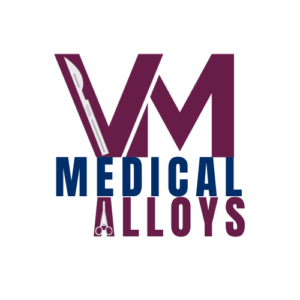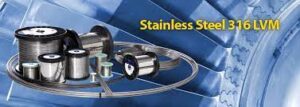I’m looking for SS316LVM ISO 5832-1 ASTM F138, ASTM F139 Surgical stainless steel…
What do you call that highly refined grade of stainless steel that all your medical device customers ask for? If you’re like us, and most people in the business, you call it “316 LVM” and never really think about it. At least not until a customer print calls for something like “316L ASTM F138” or “Implant Grade 316”. Then you might get out your books, search Google, check the specs and mill test reports, and make sure that what you’re buying or selling is just what they need. And chances are you’ve got it right. But why all the names? What should it really be called?
There’s only one definitive answer to that, but before I reveal that magical answer let’s first look at the path we take to get there.
“316 LVM”
This is by far the most common way of referring to it. It’s a bit misleading, though. The ‘VM’ stands for “Vac Melt’, so you would think that this is simply 316L that has been vacuum melted. You’d be sort of right, but not really. It is vac melted, but it’s not 316L. 316L has a UNS number of S31603. That’s the low carbon version of S31600 (what you would know as common 316 stainless). What we’re talking about is UNS S31673. Seventy numbers away. Considering each UNS number is a specific chemistry, you don’t need to know the particulars to see that they’re not the same thing. Same 316 family, true, but little differences can mean a lot when metal is going to be left inside your body.
“‘Medical’, ‘Surgical’, or ‘Implant’ Grade Stainless”
This alloy is used for all of those things, but these terms are meaningless beyond that. A number of stainless steels are used in the medical industry. Never buy anything called ‘surgical stainless’ or ‘implant grade’ without specifying exactly what alloy you need.
“ASTM F138”*
Now we’re getting closer. ASTM specifications lay down the industry accepted ‘law’ on what a product should be, and what it should be capable of. Just as “AMS” specifications are important to the aerospace industry, the ASTM “F” series of specs include a number of specifications that are particular to the medical market. ASTM F138* sets requirements exclusively for this one alloy and calls it “Stainless Steel Bar and Wire for Surgical Implants (UNS S31673)” right in the header. This is what ties the UNS number (which is for reference only) to the ‘medical grade’ that you require.
But what about the “VM”?
Interestingly enough, vacuum melting is not required. Nowhere in the specification does it mention or refer to vacuum melting. You can do whatever you want to the steel to get it to the standards of ASTM F138 *. The only way anyone knows how, though, is through an initial vacuum melt and then a remelt.
I’ll get more into remelting techniques in another article (it’s really fascinating), but the short story is that first the alloy is melted in a process called Vacuum Induction Melting (VIM) and then is either remelted using Vacuum Arc Remelting (VAR) or Electro-slag remelting (ESR). Done correctly, either method of remelting will get you to a product that is considered safe enough to implant into the human body.
Order it by name
So whether you call it 316 LVM’, ‘316L Vac Melt’, ‘Medical grade stainless’, or ‘Implant Grade Stainless’…what will always get you what you need is “UNS S31673 certified to ASTM F138”.
Get a quote on 316LVM round bar →
And don’t forget…
ASTM F138 has specific tensile and yield requirements for what it calls “Annealed”, “Cold worked”, and “Extra-hard”. These terms might not mean what you think they do. In this case they aren’t referencing a process, they’re setting what you might normally think of as a “type”. In the spec it’s referred to as a “Condition” and is included in the information that ‘shall’ be named in inquiries and orders. It’s always safest to include, at least, a minimum tensile strength on your purchase order. Better yet, refer to a min-max range on your request for quote and again on your PO. It’s what the pros do.
*ASTM F139 for sheet product







